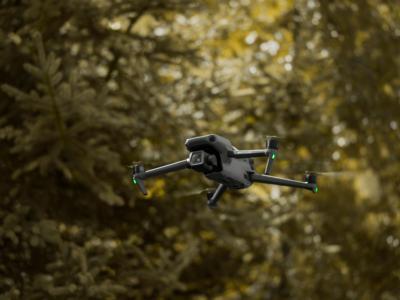Sat, Mar 16, 2024
"Discretionary Enforcement" Goes Away on March 16th
The FAA's policy to exercise discretion in prosecuting those who fall afoul of UAV Remote ID Rule is coming to a close, ending the grace period allotted to the industry.

The FAA expected compliance with the rule after September of 2023, but said that it would “consider all factors in determining whether to take enforcement action” given the limited availability of broadcast modules. The regulator had given UAV pilots until March 16th to bring their aircraft into compliance, but now they'll have to play by big-boy rules. Remote ID requires one of three compliance methods, whether that's the purchase of a UAV with a factory-equipped ID broadcasting system, a separate broadcaster to retrofit, or to operate in an FAA-Recognized Identification Area. Such "FRIA" zones are essentially amnesty areas set apart for Remote-ID-less UAV operations. From now on, non-compliant operators can face fines and suspension, even revocation of their drone pilot certificates. Municipal and state public safety officials can visit the FAA’s compliance program and are encouraged to check with FAA guidance to ensure compliance too.
Remote ID applies to "drones which are required to be registered or have been registered with the FAA, including those flown for recreation, business, or public safety, and drones that are foreign-registered". The intent is to provide just a little more heads-up to everyone operating in US airspace, particularly those in low-altitude airspace prone to VFR operations. ADS-B has given many pilots and operators a sort of pseudo-TAWS, but that system is only as functional as the overall level of registration allows it to be. The FAA says that it's not just about the safety enhancement, either, since "Remote ID also helps to lay the foundation for routine advanced operations such as package delivery and flying beyond visual line of sight."
For those who think they're already in compliance, a quick check of the Public DOC List could help prevent future problems. The FAA stressed that even if a product is advertised as “Remote ID ready” or similar verbiage, only drones or broadcast modules actually listed on the FAA DOC are in compliance with the rule. Remote ID serial numbers must be updated via FAADroneZone, too. Part 107 pilots have to register each aircraft individually.
More News
Aero Linx: International Federation of Airworthiness (IFA) We aim to be the most internationally respected independent authority on the subject of Airworthiness. IFA uniquely combi>[...]
Ultrahigh Frequency (UHF) The frequency band between 300 and 3,000 MHz. The bank of radio frequencies used for military air/ground voice communications. In some instances this may >[...]
A Few Questions AND Answers To Help You Get MORE Out of ANN! 1) I forgot my password. How do I find it? 1) Easy... click here and give us your e-mail address--we'll send it to you >[...]
From 2019 (YouTube Edition): Learning To Paint Without Getting Any On Your Hands PPG's Aerospace Coatings Academy is a tool designed to teach everything one needs to know about all>[...]
Also: Sustainable Aircraft Test Put Aside, More Falcon 9 Ops, Wyoming ANG Rescue, Oreo Cookie Into Orbit Joby Aviation has reason to celebrate, recently completing its first full t>[...]
 ANN's Daily Aero-Linx (05.06.25)
ANN's Daily Aero-Linx (05.06.25) ANN's Daily Aero-Term (05.06.25): Ultrahigh Frequency (UHF)
ANN's Daily Aero-Term (05.06.25): Ultrahigh Frequency (UHF) ANN FAQ: Q&A 101
ANN FAQ: Q&A 101 Classic Aero-TV: Virtual Reality Painting--PPG Leverages Technology for Training
Classic Aero-TV: Virtual Reality Painting--PPG Leverages Technology for Training Airborne 05.02.25: Joby Crewed Milestone, Diamond Club, Canadian Pilot Insurance
Airborne 05.02.25: Joby Crewed Milestone, Diamond Club, Canadian Pilot Insurance



